► Low-cost OX truck project seeks new investment
► Aimed at developing countries, first seen in 2013
► Designed by Gordon Murray
No, this isn’t a refugee from an early ’80s issue of Kit Car Magazine. This, despite its retro cuboid looks, is the new OX truck from Global Vehicles Trust.
Well, new in the sense that it’s the subject of a recent press release, published to drum up some commercial interest. We first saw the OX back in 2013, when it did its initial rounds in an effort to garner some financial support.
What’s it for? It looks a little… agricultural.
The idea behind the OX is an entirely commendable and honourable one. It’s a simple, low-cost truck that’s designed for developing countries which require a tough, hard-working truck that can carry out myriad tasks.
So, what’s special about it?
Well, it’s not as small as it looks, for a start. It’s about as long as a Volkswagen Golf, but wider and taller, and it weighs 1600kg dry. Unlike the Golf, however, the OX has a substantial claimed payload capacity of 1900kg and – if otherwise unladen – it can seat up to 13 people, its makers say.
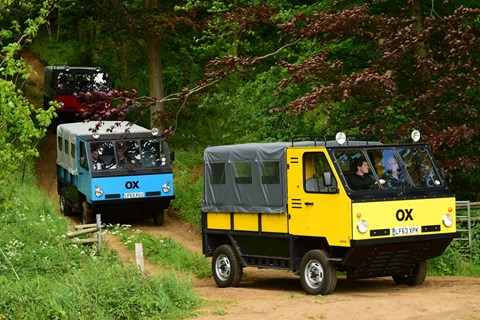
It also has a decent amount of ground clearance, long-travel suspension and a stubby nose and tail, granting it good departure and approach angles. These aspects make it ideally suited to tackling rough terrain.
The OX isn’t four-wheel drive, however, which you might expect given its rugged off-road intents. Power comes from a 2.2-litre 16-valve diesel that produces 99bhp and 229lb ft, all of which is sent to the front wheels through a five-speed manual gearbox. It is reputed to deal with off-roading as well as an equivalent four-wheel-drive rival, however, and the simplicity of its drivetrain could be considered a plus.
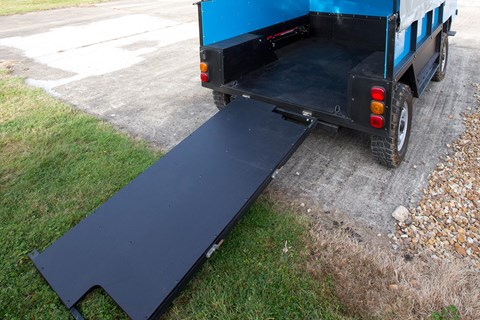
Other key features include a tailgate that can be detached and used as a loading ramp, rear bench bases that can be used as planks to help free the OX from mud and sand, and a power take-off (PTO) for driving tools or generators.
Any other interesting features on the OX van?
GVT claims that the OX can be flat-packed within itself, making it easier to ship around the world. Reputedly, it takes three people some six hours to assemble the flat-packed version; six of these compressed OX vehicles can then be stowed in a regular 40ft container.
It’s a clever principle, ideal for getting significant numbers of them out to developing countries quickly and at a sensible cost. However, the company also says it requires three skilled people up to 12 hours to assemble the OX at the other end – with GVT saying that professional companies will be employed ‘to assemble and maintain the finished vehicles.’
On reflection, it looks like the OX is basically supplied as a bare chassis with the body panels and various parts stacked on top – and it requires a fair amount of work to finish – like many other complete knock-down kits.
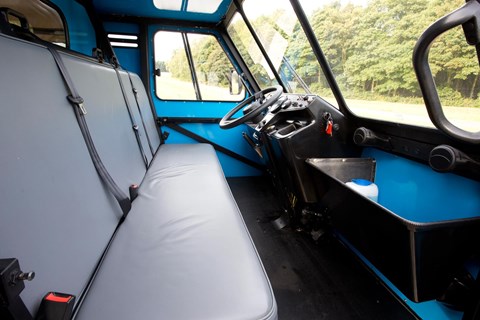
Its manufacturer also cites its central driving position as having ‘specific advantages for the world’s developing countries, some of which have right-hand traffic, while others drive on the left.’ You could argue that GVT has just made it a complete pain in either instance – surely the smart solution would have been an easily swappable steering column assembly?
Who’s behind it?
Sir Torquil Norman, a British businessman and philanthropist. He envisioned a truck that could provide all-terrain, practical mobility for areas like Africa, and roped in Gordon Murray – yes, that one – to come up with a suitable design. Norman later founded GVT, to further pursue the concept.
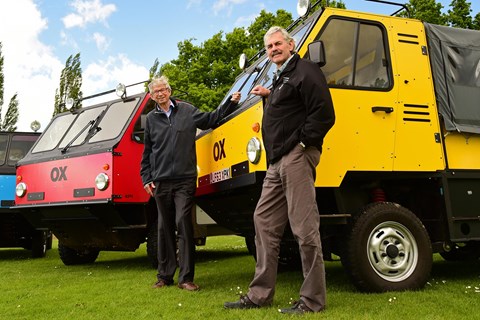
Norman said: ‘My inspiration for the OX goes back to seeing the Africar project of the 1980s. This project shares some of the aims of that vehicle, but its execution is radically different. OX was just a dream six years ago, but it is now a realistic prospect for production with working prototypes that have completed a comprehensive testing programme.’
Wait, is this another stillborn Murray project – like the T25 city car and iStream production?
Well, regardless of its good intentions, there are hints of that. This project went public in 2013 and, given that several prototypes have now been built, presumably a lot of money has been sunk into it. A case of escalation of commitment, or a concept that’s about to be met with wild success? We’d sincerely hope the latter, but time, as they say, will tell.
On the plus side, in any case, perhaps this project has so far saved us from seeing T25s in the wild – by taking up Murray’s time. After all, for that car to be successful, it needs to look better and be far more justifiable. No-one will want one, otherwise, regardless of how good it reputedly is.
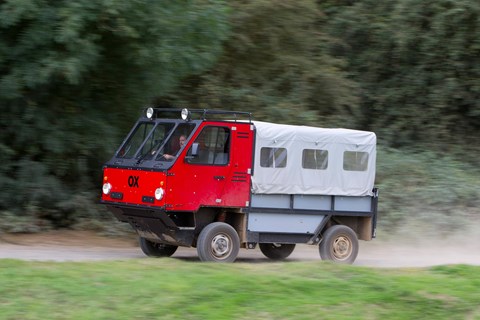
What are the potential sticking points with the OX?
At a glance, there are several issues that may be holding it back:
- No word on price yet. It’ll need to be cheaper than alternatives in developing countries
- It sounds difficult to assemble without OEM support
- Parts may be hard to obtain when it’s out in the boondocks, compared with alternatives
- Only 2WD which, despite claims, could be problematic – particularly when laden
- Bringing costs down could entail making it locally, negating any ‘flat-pack’ benefits
- Central driving position potentially problematic in some instances
It’s a neat concept, though, but perhaps one that might be considered by some to be unjustifiable in the areas and businesses it is targeting.
So, what’s next for the OX?
If anything’s to happen, as was the case three years ago, it needs OXloads of money thrown at it.
Norman added: ‘Our priority now is to raise the funding to complete the testing and take the project to fruition. We believe that the OX has huge potential for charities, aid organisations and development programmes. My dream is to one day see an OX in every village in Africa.’